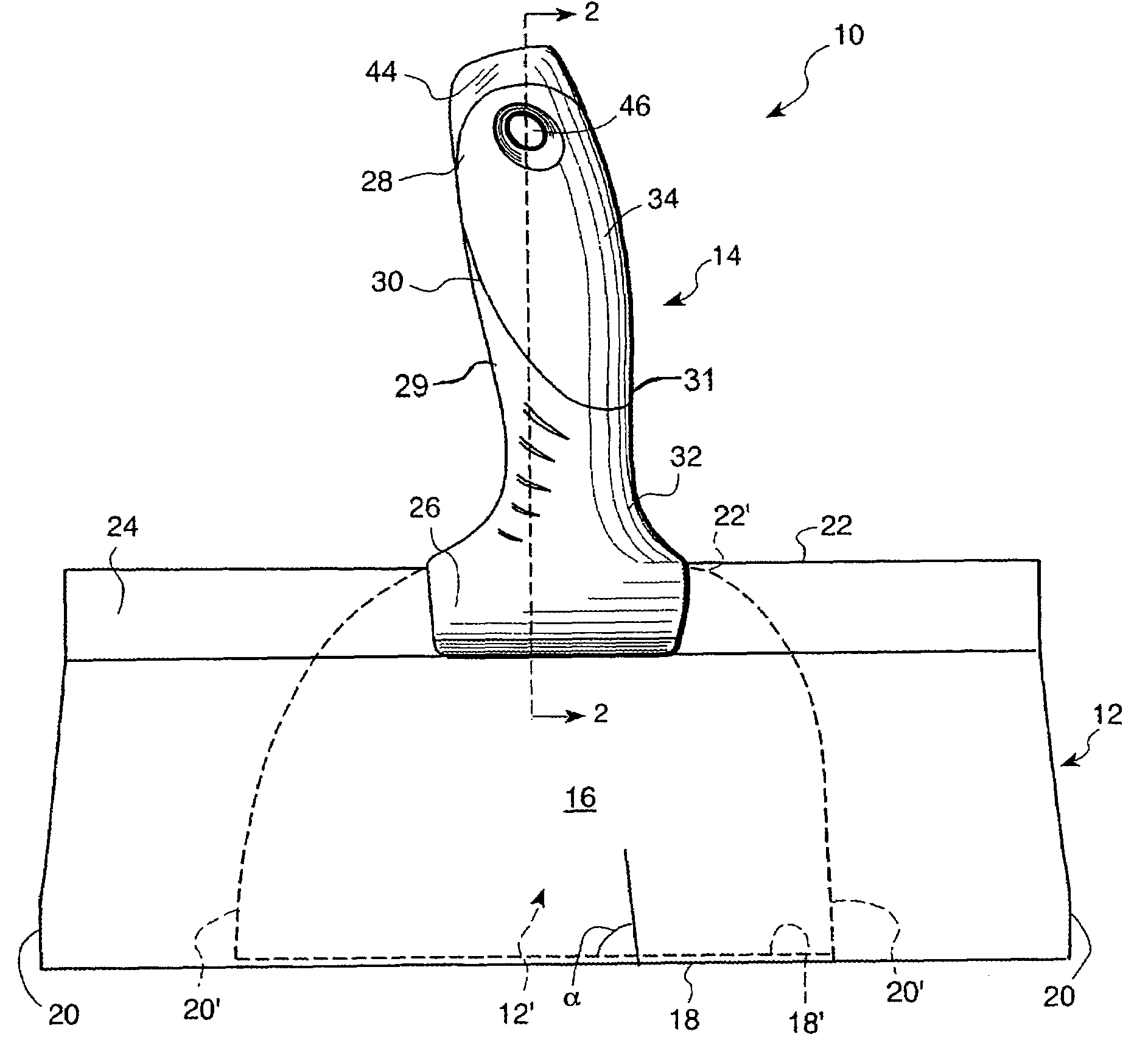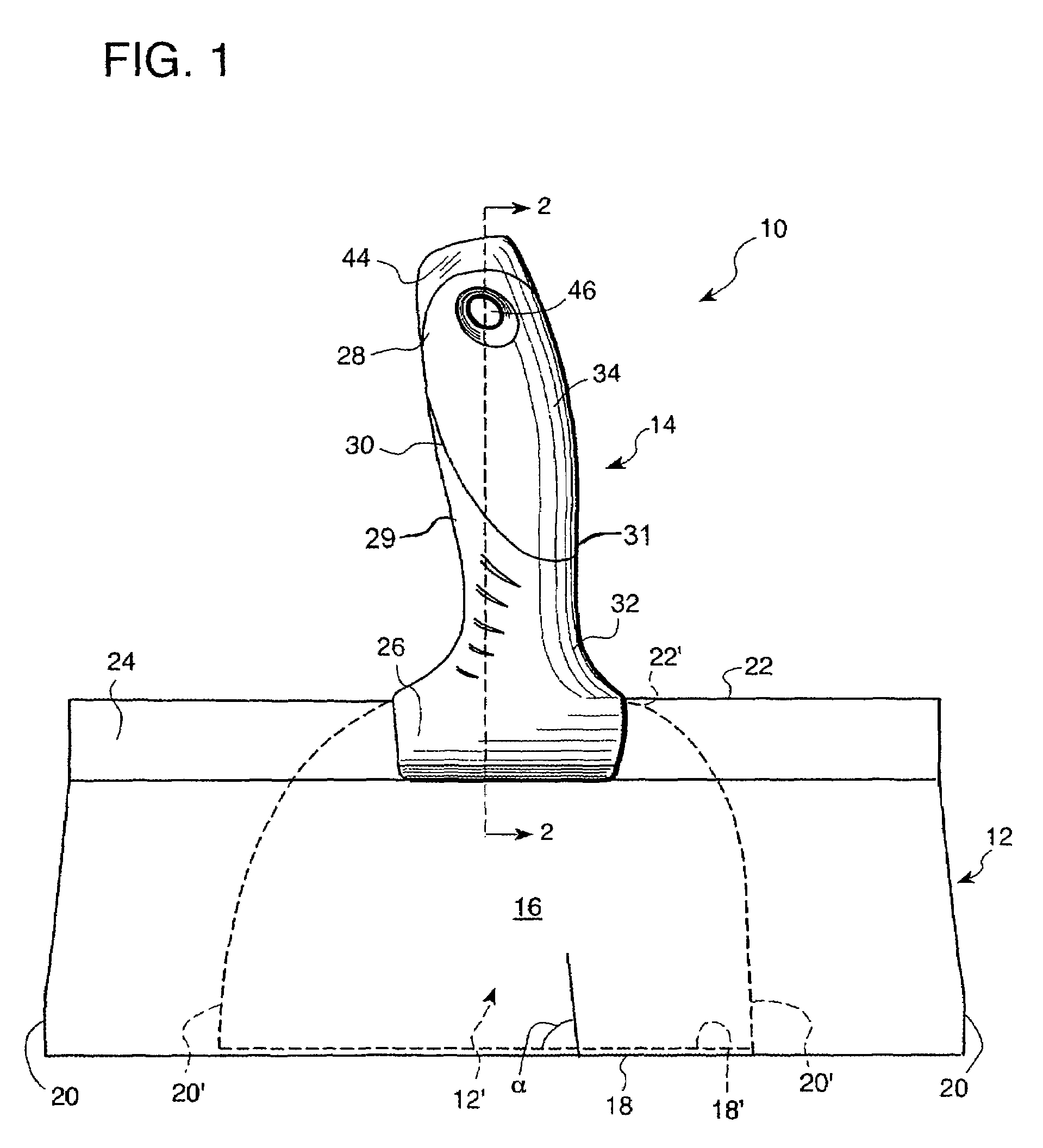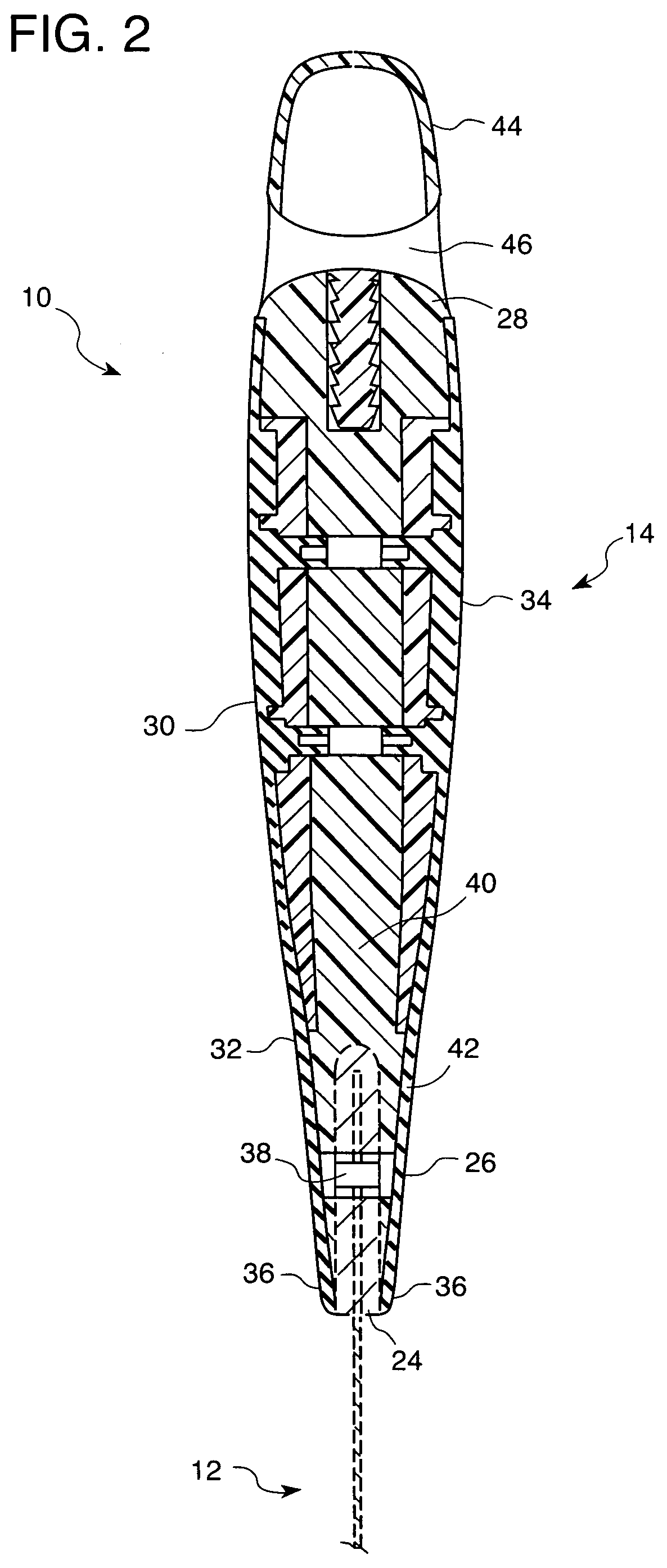Taping knife with offset handle
a technology of offset handle and taping knife, which is applied in the field of hand tools and hand tool handles, can solve the problems of inability to properly grip the knife, difficulty or discomfort of users with smaller hands, and inability to maintain a firm grip on the knife and control, so as to reduce wrist stress and overall fatigue, and prevent the user's hand from slipping
- Summary
- Abstract
- Description
- Claims
- Application Information
AI Technical Summary
Benefits of technology
Problems solved by technology
Method used
Image
Examples
Embodiment Construction
[0012]Referring now to FIG. 1, the present taping knife is generally designated 10. The knife 10 generally includes a blade 12, 12′, and a handle 14.
[0013]The taping knife blade 12, 12′ is made up of a web 16, a working edge 18, 18′, two side edges 20, 20′, and a handle edge 22, 22′ opposite the working edge. Taping knife blades are preferably thin and flexible, and they typically taper in thickness throughout the portions of the blade 12, 12′ with the thickest portion at the handle and the thinnest portion at the end of the blade. The blade 12, 12′ is preferably made from blued steel, but other materials exhibiting similar physical characteristics are contemplated.
[0014]There are generally two styles of blade that are preferred: a blade 12 (shown in solid lines) eight to fourteen inches wide that has side edges 20 (shown in solid lines) composed of substantially straight segments and a handle edge 22 that is nearly as long as the working edge 18, and a blade 12′ (shown in phantom) ...
PUM
 Login to View More
Login to View More Abstract
Description
Claims
Application Information
 Login to View More
Login to View More - R&D
- Intellectual Property
- Life Sciences
- Materials
- Tech Scout
- Unparalleled Data Quality
- Higher Quality Content
- 60% Fewer Hallucinations
Browse by: Latest US Patents, China's latest patents, Technical Efficacy Thesaurus, Application Domain, Technology Topic, Popular Technical Reports.
© 2025 PatSnap. All rights reserved.Legal|Privacy policy|Modern Slavery Act Transparency Statement|Sitemap|About US| Contact US: help@patsnap.com



